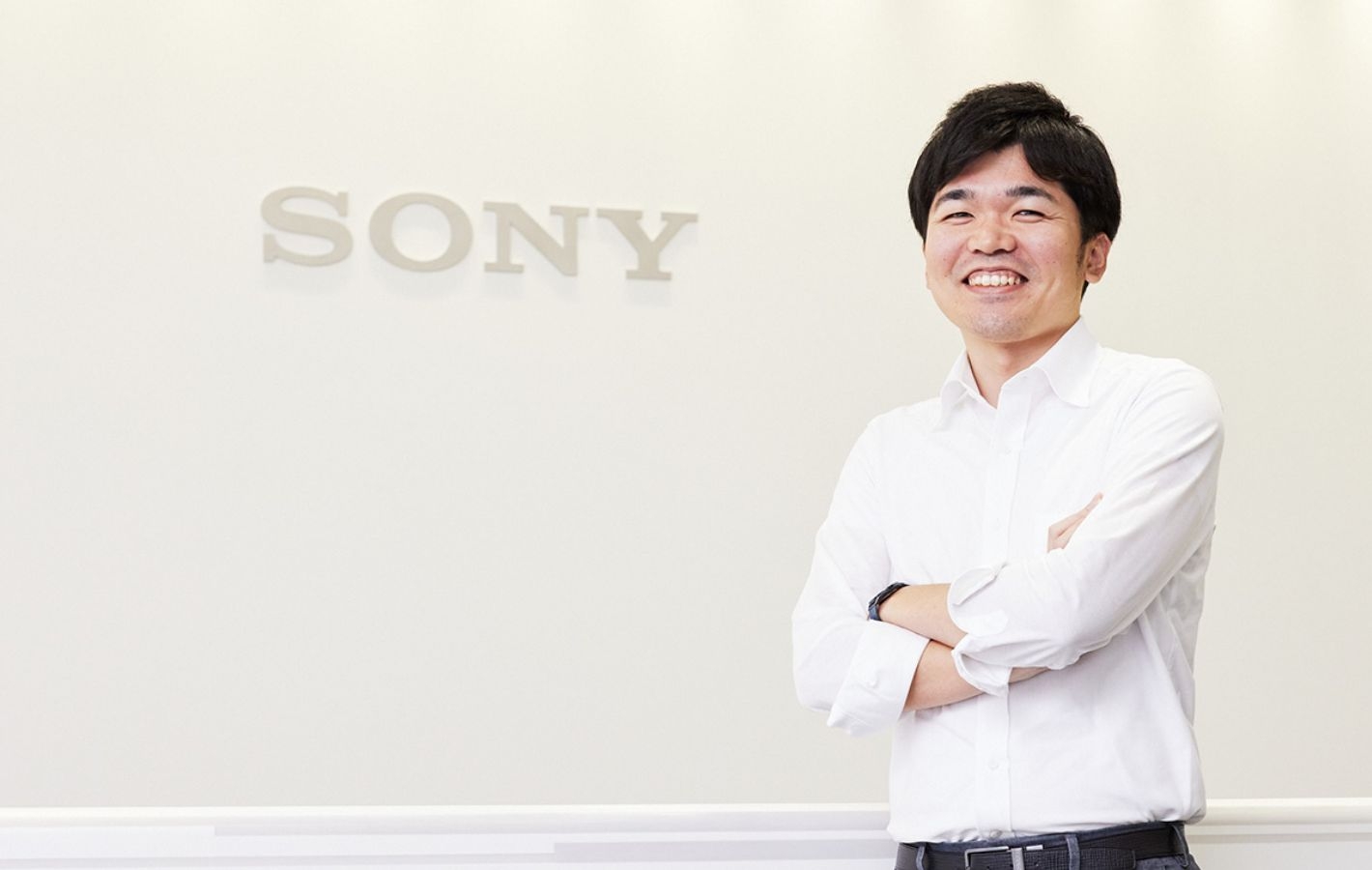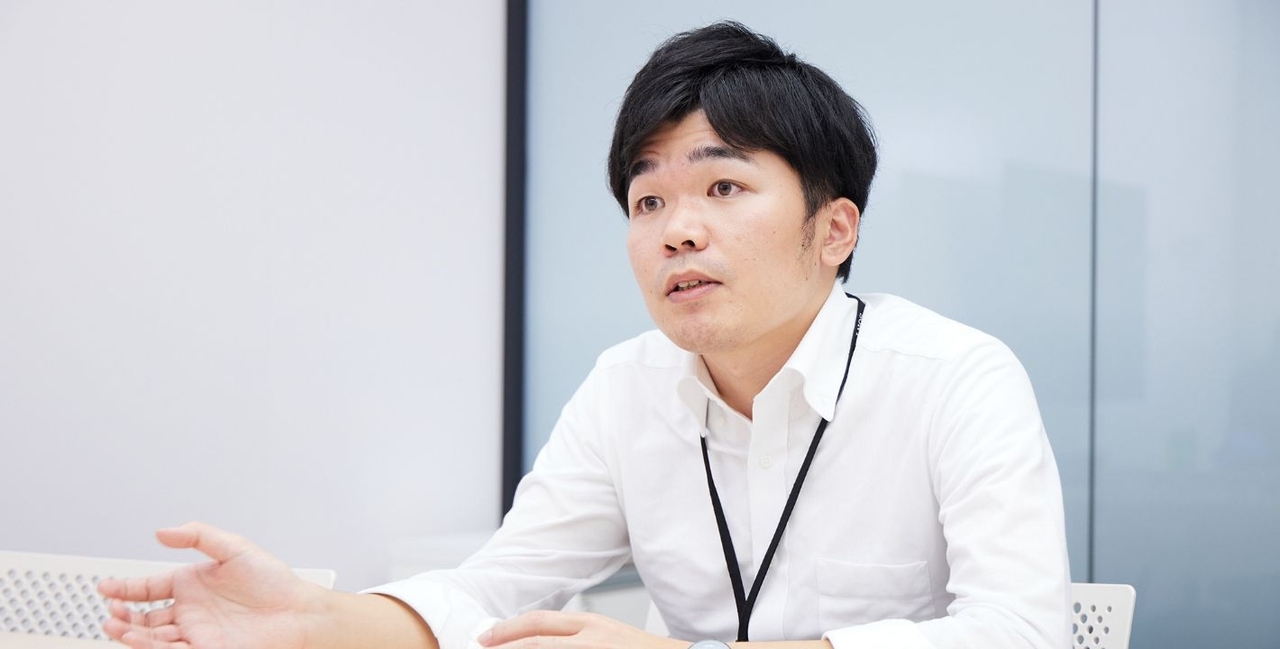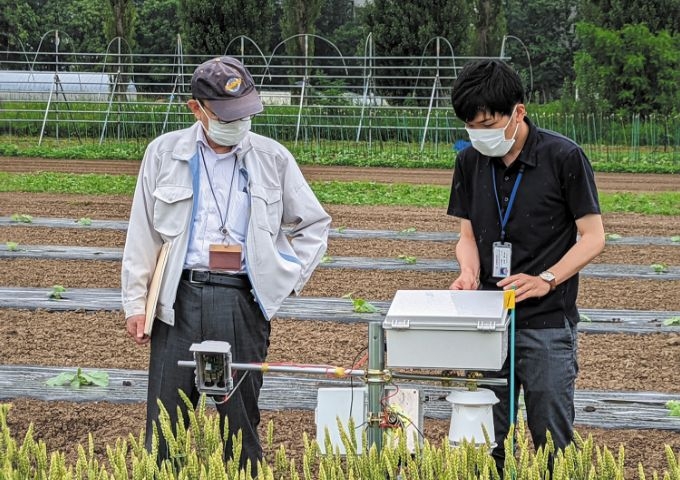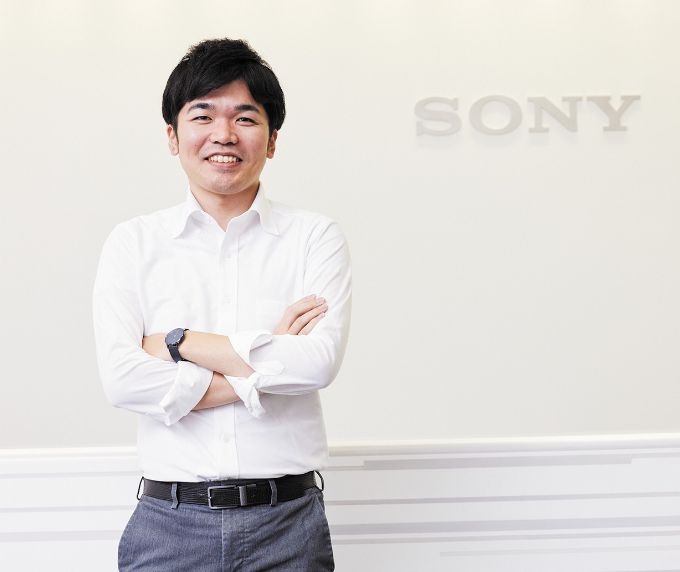Enrolled in the bachelor's degree program in the School of Engineering at Tokyo Institute of Technology.
Prospective Students
Tokyo Institute of Technology merged with Tokyo Medical and Dental University to form Institute of Science Tokyo (Science Tokyo) on October 1, 2024.
Over time, content on this site will be migrated to the Science Tokyo Web. Any information published on this site will be valid in relation to Science Tokyo.

Prospective Students

Sony Group Corporation / Sony Semiconductor Solutions Corporation / Visiting Faculty, Hokkaido University Doctor of Engineering
Wheat growth sensing in Hokkaido, a challenge for sustainable agriculture
News of extreme weather events, such as heat waves, droughts, and floods, continues to unfold. As climate change progresses and threatens the earth and our lives on it, Mr. Matsuura, who works for Sony Group Corporation, is tackling global challenges through the use of AI and sensing technologies. As part of this effort, he is pursuing research on wheat growth sensing in Hokkaido. Looking back on his student days when he was immersed in device research, and forward to the present, he talked about his studies and experiences that are utilized in his daily work.
In high school, I actively studied science subjects. To put this knowledge to use, I enrolled in the Department of Electrical and Electronic Engineering at Tokyo Institute of Technology (5th Academic Group in 2011). While studying a wide range of topics such as information and control systems, I was most interested in the class on device systems. Devices such as smartphones and PCs are now an integral part of our lives. Intrigued by this real-world impact, I applied to the Hitoshi Wakabayashi Laboratory, which specializes in device research. Thereafter, I kept my research in this laboratory until the completion of my doctoral program. Prof. Wakabayashi has been very helpful to me not only in my research but also in various aspects of my student life. He is a mentor in my life that I still keep in touch with.
What I was researching at the time was the development of transistors using new materials. Transistors are an important component of electronic devices that serve two functions: as a switch that conducts current and as an amplifier that adjusts the magnitude of the current. With many smaller transistors, electronic devices can implement more sophisticated functions. Therefore, to contribute to making even smaller transistors, I began research on transistors using a new material called molybdenum disulfide.
In the transistor fabrication process, a uniform thin film of molybdenum disulfide is formed on the wafer substrate, and metal and insulating materials are placed on top. It took about two days to produce the transistor, but the finished transistor did not work as expected, and we continued to struggle with it. I will never forget the moment when we finally confirmed that the transistor worked after many prototypes. We were delighted because this was the first time that a transistor made from molybdenum disulfide had been successfully fabricated in the Wakabayashi Laboratory. A passion for manufacturing that was fostered through these successful experiences has become the core of who I am today.

In order to move on to an environment where I could broaden my possibilities, I looked at multiple industries during my job search, without being constrained by the topics of my research as a student. It was during this time that I came across the Sony Group Corporation, with its diverse businesses centered on manufacturing and technology. After my student days when I was immersed in manufacturing, I wanted to contribute to the utilization of that technology at work, and I am now involved in a wide range of work tasks.
I am mainly in charge of a project called the Earth MIMAMORI platform. This was initiated to protect the earth from natural disasters that are becoming more frequent due to global warming, using sensing technology. Sensors equipped with AI processing are deployed around the world, and the observation data is analyzed by AI to visualize changes in the global environment. Through these efforts, we aim to pursue economic rationality as a company, along with social value such as disaster prevention and promotion of people's behavioral changes. During my first two years with the company, I worked on the development of AI for sensing devices using our SPRESENSETM, IoT board computer. I have conducted a series of verifications to develop an AI that works even with small IoT boards. In addition, I focused on activities to promote these technologies outside the company, such as at overseas hackathon events.

The demonstration test is being conducted in a wheat field on the Hokkaido University campus with Professor Noboru Noguchi (left) of the Research Faculty of Agriculture, Hokkaido University. The apparatus in Mr. Matsuura's (on the right) hand contains the ELTRES communication device.
In my third year, I was transferred to Hokkaido, where I am conducting joint research with Hokkaido University as part of the Earth MIMAMORI platform project. One of these research projects is a wheat growth sensing demonstration test that we are conducting with Professor Noboru Noguchi of the university's Research Faculty of Agriculture. Wheat is an essential source of calories for us. For its cultivation, it is very important to gauge how the ears are growing and apply pesticides at the right time, but it takes a lot of time and effort for farmers to watch over around the vast wheat fields. So, we thought that we could use AI and sensing technology to solve the problem. First, the IMX500TM image sensor with AI processing was installed on the farmland to observe the number of wheat ears, the amount of moisture in the soil, and the temperature. The collected data is then sent to a satellite via a wireless communication standard called ELTRESTM. Farmers can then receive data from the satellite and determine when to apply pesticides without having to go to the field. ELTRES is also well suited for farmland that is nearly out of range because it can transmit data to distant locations with a small amount of electricity. If this wheat growth sensing technology can be put into practice, it will reduce the burden on farmers while maintaining the production quantity and quality, bringing us one step closer to a sustainable society.
The Earth MIMAMORI platform is a global effort to make our lives more sustainable. Some of the team members are from overseas, and the international sensibility and leadership skills I developed at Tokyo Tech are proving useful. As a student, I was given the opportunity to go abroad on multiple occasions in addition to presenting at international conferences. In the first year of my Master's Program, I studied abroad at EPFL, the Swiss Federal Institute of Technology Lausanne. In the third year of my Doctoral Program, I participated in an internship at the IBM Thomas J. Watson Research Center in New York. In addition, at the Academy for Global Leadership (AGL), which I belonged to as a doctoral student, I faced my inner self in a profound way through workshops. This experience has been put to good use in my current position leading a joint research effort.
Furthermore, what has helped me to carve out a career is the adventurous spirit that was nurtured during my college years. Tokyo Tech offers a wide variety of educational programs and support, and I took advantage of them to study abroad and participate at the AGL. Because I learned how wonderful it is to expand my horizons by jumping into a new world, rather than staying in a familiar environment, I am able to venture forward and advance my career in the real world. In fact, when I was approached about a transfer to Hokkaido, I accepted with a resounding yes. I believe that my strength lies in the fact that I see changes in the environment as opportunities for growth.
The most significant thing I gained at Tokyo Tech was a firm commitment to manufacturing. The desire to deliver new and better products to society has remained a driving force for me, both during my student days when I was immersed in device development and now as I am involved in the social implementation of technology. With my strengths in both creating and utilizing new technologies, I hope to solve as many of the world's problems as possible with the power of manufacturing and pass it on to future generations.
Enrolled in the bachelor's degree program in the School of Engineering at Tokyo Institute of Technology.
Enrolled in the master's degree program in the Department of Electronics and Applied Physics, Interdisciplinary Graduate School of Science and Engineering, Tokyo Tech. Worked on the development of transistors using new materials in the Wakabayashi Laboratory
Studied abroad at EPFL, the Swiss Federal Institute of Technology Lausanne
Enrolled in the Graduate Major in Electrical and Electronic Engineering (doctoral program), Graduate School of Engineering, Tokyo Tech
Internship at IBM Thomas J. Watson Research Center in New York
After completing the doctoral program, joined Sony Group Corporation Involved in the Earth MIMAMORI platform project
Transferred to Hokkaido as part of the same project, focusing on joint research with Hokkaido University Conduct demonstration test for sustainable agriculture

Kentaro Matsuura
Profile
In 2011, enrolled in a bachelor's degree program at Tokyo Institute of Technology. In 2015, joined the Wakabayashi Laboratory in the Department of Electronics and Applied Physics, Interdisciplinary Graduate School of Science and Engineering, Tokyo Tech. After receiving a doctoral degree in 2020, joined Sony Group Corporation. From 2022, transferred to Hokkaido for joint research with Hokkaido University. He is involved in several research projects, including wheat growth sensing.
School of Engineering
—Creating New Industries and Advancing Civilization—
Information on School of Engineering inaugurated in April 2016
The Special Topics component of the Tokyo Tech Website shines a spotlight on recent developments in research and education, achievements of its community members, and special events and news from the Institute.
Past features can be viewed in the Special Topics Gallery.
Interview held on November 22, 2023 at Sony Group Corporation